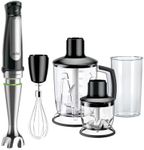Buying Guide for the Best Hand Blenders
Choosing the right hand blender can make a big difference in your kitchen, whether you're making smoothies, soups, or sauces. Hand blenders, also known as immersion blenders, are versatile tools that can save you time and effort. To find the best fit for your needs, it's important to understand the key specifications and how they impact performance. Here’s a guide to help you navigate through the essential features of hand blenders.Power (Wattage)Power, measured in watts, determines how strong and efficient the hand blender is. Higher wattage means the blender can handle tougher ingredients and blend more smoothly. Typically, hand blenders range from 200 to 1000 watts. For basic tasks like blending soft fruits or making smoothies, a lower wattage (200-400 watts) is sufficient. For more demanding tasks like crushing ice or blending tough vegetables, look for a higher wattage (600-1000 watts). Consider what you will be using the blender for most often to decide the right power level for you.
Speed SettingsSpeed settings allow you to control the blending process. Some hand blenders come with a single speed, while others offer multiple speeds or even variable speed control. More speed options give you greater control over the texture and consistency of your blends. If you plan to use the blender for a variety of tasks, such as whipping cream, pureeing soups, or making baby food, multiple speed settings (2-5 speeds) can be very useful. For simpler tasks, a single or dual-speed blender may be sufficient.
Blade Material and DesignThe blades are the most critical part of a hand blender. Stainless steel blades are preferred because they are durable, resistant to rust, and can handle hot ingredients. The design of the blades also matters; some blenders have multiple blades or unique shapes to enhance blending efficiency. If you plan to use the blender frequently or for tough ingredients, look for high-quality stainless steel blades with a design that promotes thorough blending.
Attachments and AccessoriesMany hand blenders come with additional attachments like whisk attachments, chopper bowls, or blending beakers. These accessories can expand the functionality of your blender, making it more versatile. If you enjoy cooking and experimenting with different recipes, look for a hand blender that includes useful attachments. However, if you only need the blender for basic tasks, a simpler model without extra accessories might be more suitable.
Ergonomics and DesignErgonomics and design affect how comfortable and easy the hand blender is to use. Look for a model with a comfortable grip, ideally with non-slip material. The weight of the blender is also important; a lighter model is easier to handle, especially for extended use. Consider how the blender feels in your hand and whether the controls are easy to reach and operate. A well-designed hand blender can make your blending tasks more enjoyable and less tiring.
Ease of CleaningCleaning a hand blender can be a hassle, so it's important to consider how easy it is to clean. Look for models with detachable blending arms that can be easily removed and washed. Some parts may be dishwasher safe, which can save you time and effort. If you plan to use the blender frequently, ease of cleaning should be a top priority to ensure that you can maintain it without too much trouble.
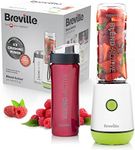





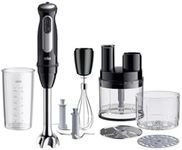
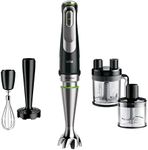


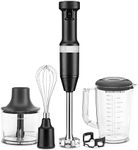
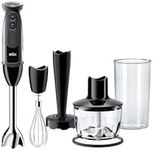
![Russell Hobbs Hand Blender [3-in-1 Hand Mixer] Electric Chopper (Food Processor with 3 Attachments for Baby Food, Smoothies, Soup, 2 speeds + pulse, Stainless steel, BPA-Free) Matte Charcoal 27141](https://images-proxy.bestreviews.guide/7dr2QEa82RrEPjZnKmKgRRoZhio=/0x150/https://m.media-amazon.com/images/I/41jOEtAMyuL._AC_CX679_.jpg)

